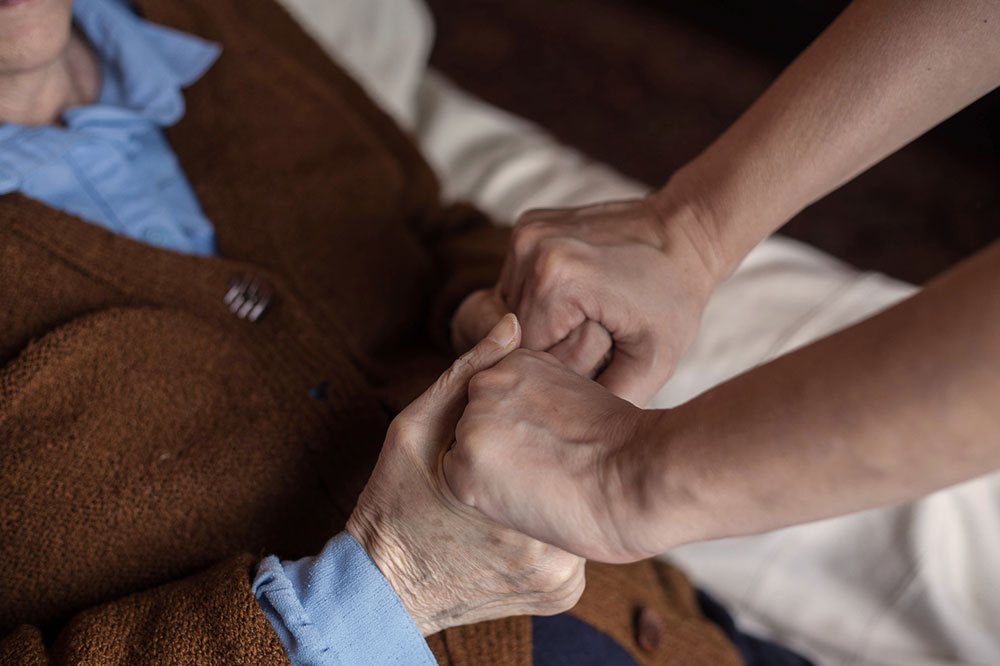6 Exercises for Managing Spinal Muscular Atrophy Symptoms
Spinal muscular atrophy (SMA) is a genetic disorder that weakens muscles making it difficult to do basic things like swallow, breathe and walk. The type of SMA a person suffers from depends on the onset and the severity. The most severe form, SMA type 1, usually occurs in infancy, and can cause motor and respiratory difficulties. SMA type 2 and SMA type 3, may occur later in childhood and have varying degrees of severity.

Exercises
Spinal muscular atrophy (SMA) is a rare genetic disorder that affects the motor neurons responsible for controlling muscle movement. Exercises that involve gently moving the limbs and joints with external assistance can help those with SMA prevent joint contractures and stiffness associated with the condition. However, one should consult a healthcare professional before attempting any of these exercises. Further, physical therapists can not only help one perform these exercises but also modify and recommend suitable alternatives based on specific needs and the severity of the condition. Here are a few spinal muscular atrophy exercises worth considering:
Stretching and flexibility exercises
Stretching exercises can help prevent muscle tightness and improve flexibility. These exercises can also alleviate discomfort and reduce the risk of joint contractures. One can opt for gentle stretching of major muscle groups, focusing on the arms, legs, and spine. Holding stretches for a short duration, combined with deep breathing, can enhance the effectiveness of the exercises. What’s more? Regular stretching can also improve posture and promote better body alignment. Those who cannot sit should take up stretching and reduced passive range of motion (ROM) exercises about three to five times a week. Stretching exercises can include:
- Shoulder flexion and shoulder external rotation for the arms
- Cervical lateral flexion and cervical rotation for the neck
- Elbow extensions with palms facing upwards
- 90-degree forearm bend with support
- 90-degree wrist bending with palm facing upward
- Knee-to-chest hip flexion
- Standing calf stretches
- Leg lifts while lying down with assistance
Aqua therapy
Aqua therapy, also known as water therapy or hydrotherapy exercises, should take place in a warm pool. Water provides buoyancy, reducing the impact on joints and allowing one to perform exercises without exerting excessive stress on their muscles and bones. This can be especially beneficial for people with SMA who have limited load-bearing capabilities. Water offers natural resistance and requires one to engage core muscles, improving balance, coordination, muscle strength, and endurance. Additionally, immersion in water can improve blood circulation and reduce swelling, while warm water can relax muscles and alleviate muscle stiffness associated with SMA. Hydrotherapy exercises can include:
- Water walking forward or backward with the assistance of a therapist
- Jumping jacks in water
- Leg raises while standing or holding onto a pool ledge
- Complete range of motion for each joint while either sitting or standing in a pool
- Circling ankles clockwise and anti-clockwise
- Immersing in water and floating to relax
Walking
Those who are able to walk can benefit from this activity to improve their overall mobility and cardiovascular health. One can also use adaptive walking techniques and assistive devices like walkers with a doctor’s recommendation.
Yoga
Yoga includes gentle stretches and postures that help improve flexibility, maintain joint health, and promote relaxation, making it one of the best spinal muscular atrophy exercises. One should try poses that work while sitting on a chair or a stability ball, such as neck stretches, seated twists, and shoulder rolls.
Horseback riding
Horseback riding, or therapeutic horseback riding (hippotherapy), can provide numerous benefits for those with SMA. The gentle motion of the horse can help improve core strength, balance, and posture.
Breathing exercises
Over time, SMA can affect the muscles involved in breathing, leading to respiratory difficulties. Slow and deep breathing practices can be great spinal muscular atrophy home exercises for improving lung capacity and overall respiratory health.
Symptoms
Spinal muscular atrophy primarily affects infants and young children but can also be seen in adults. The condition causes muscle weakness and motor function impairment, affecting activities such as crawling, standing, and sitting up independently. Here are some other symptoms one may observe:
Stiffness : One may also notice stiffness in muscles, resulting in less flexible joints and limited mobility.
Difficulty walking : One may experience trouble walking, running, or maintaining balance due to muscle weakness in the legs and core.
Breathing difficulties : SMA can affect the muscles involved in breathing, leading to respiratory difficulties. This can result in shortness of breath, weak cough, and recurrent respiratory infections.
Low muscle tone: People with SMA may have floppy or limp muscle appearance, especially arms and legs. This is also known as hypotonia.
Difficulty swallowing : Weakness in the muscles responsible for swallowing may cause difficulty in sucking, eating, or swallowing.
Tremors : One may experience tremors, muscle cramps, or involuntary muscle movements in the early stages of SMA.
Joint contractures : Muscle weakness and immobility can cause joint contractures, where the joints become stiff and less flexible, and movements become painful.
Quivering tongue : Infants and kids with SMA may experience tongue quivering or twitching, which is also called fasciculation.
Delayed development : Children with SMA may experience delays in reaching developmental milestones, such as sitting up, crawling, or walking.
Loss of muscle mass, fatigue, and muscle spasms are other symptoms one may experience.
Management
Spinal muscular atrophy treatment aims to manage symptoms and enhance the quality of life for those living with this genetic disorder. While there is no cure for SMA, options like gene therapy, physical therapy, respiratory support, and nutritional assistance can help relieve certain symptoms. Additionally, an early diagnosis and a multidisciplinary approach can optimize treatment outcomes.




